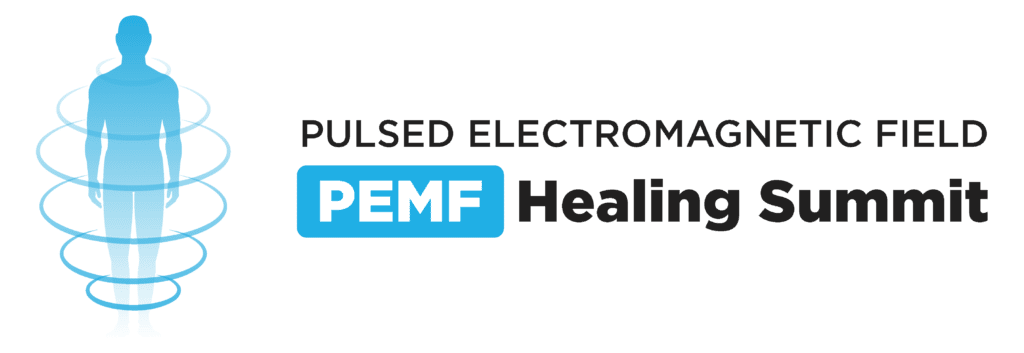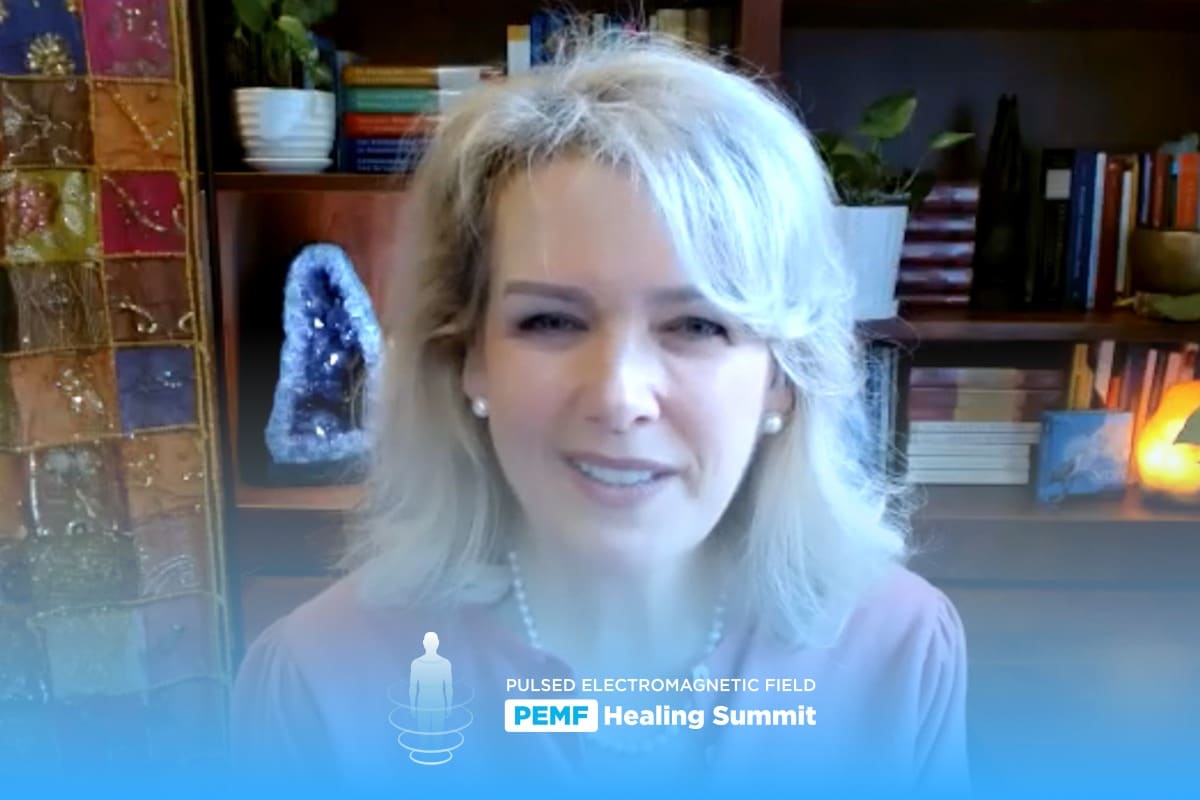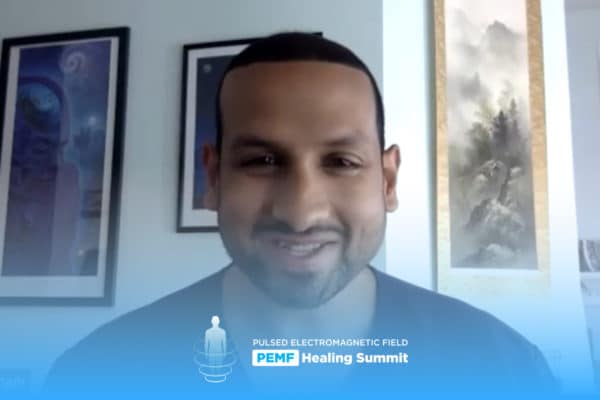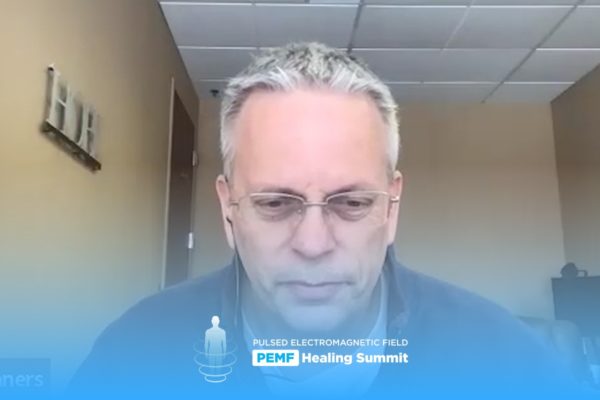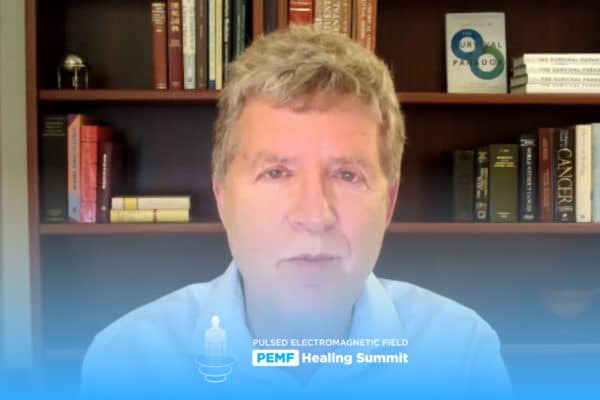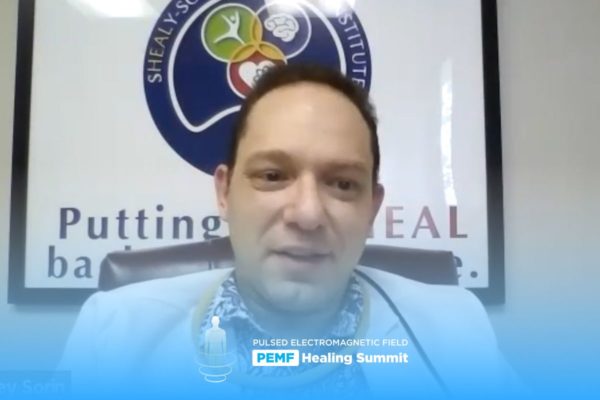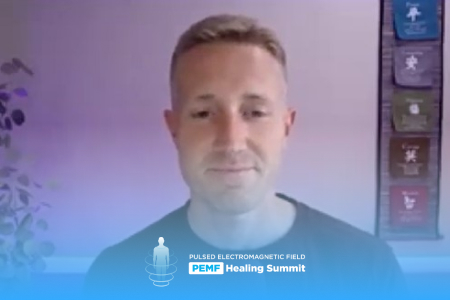Join the discussion below
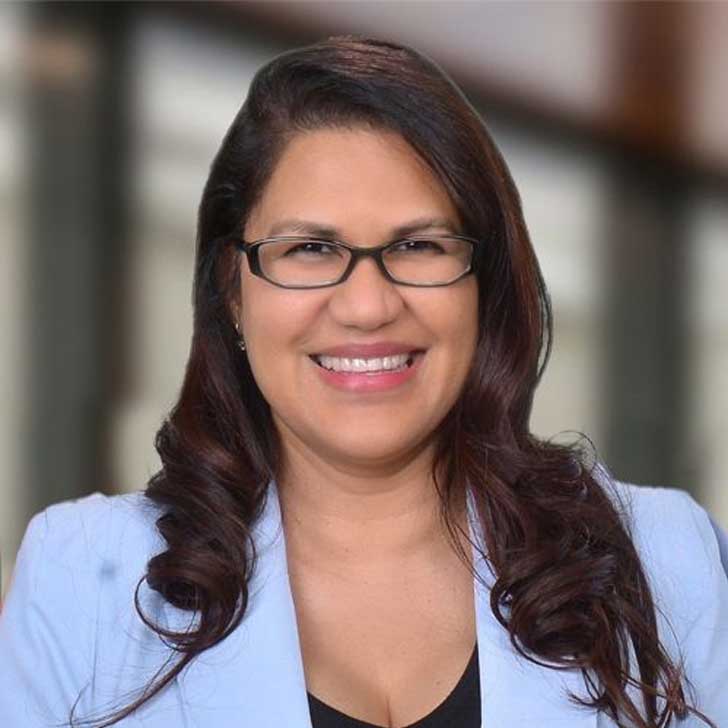
Dr. Marlene Mahipat started from humble beginnings in Trinidad and moved to the United States in 1990 with $300 and two suitcases containing her entire life. Overcoming many obstacles, which included working three jobs and going to school full time, she persevered and completed her education to earn a Doctor... Read More
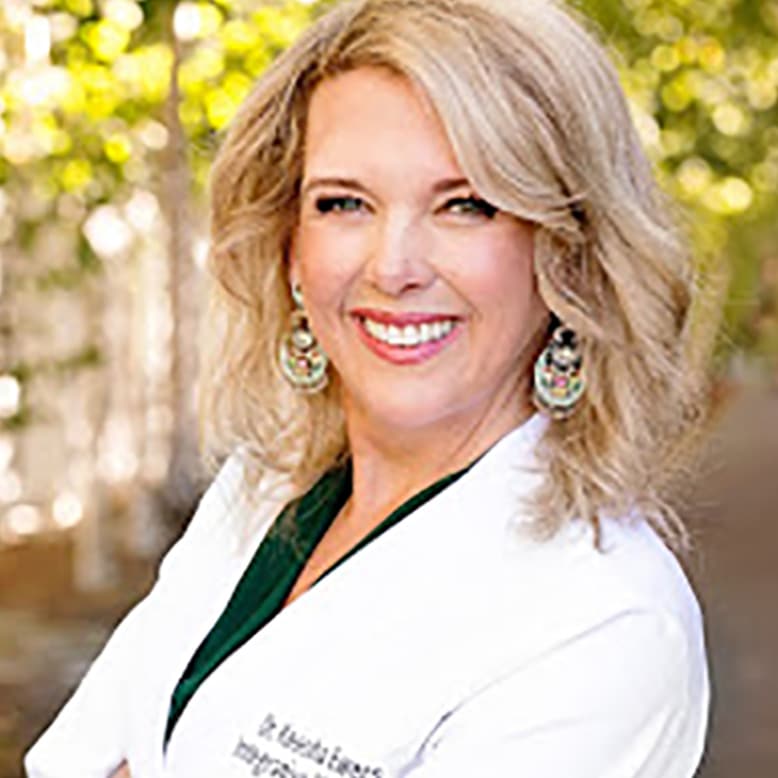
Keesha Ewers, PhD, ARNP-FNP-C, AAP, IFM-C
Dr. Keesha Ewers is an integrative medicine expert, Doctor of Sexology, Family Practice ARNP, Psychotherapist, herbalist, is board certified in functional medicine and Ayurvedic medicine, and is the founder and medical director of the Academy for Integrative Medicine Health Coach Certification Program. Dr. Keesha has been in the medical field... Read More
- “Trauma”, whether in childhood or later in life, can manifest itself down the road into many diseases including autoimmune conditions. There is Trauma (big T) and also trauma with a small t. We all have trauma/s from childhood in some form or the other and left unresolved can turn into continuous or recurrent emotional and/or physical pain. Along with various tools offered by a qualified mental health practitioner, a person can recognize or come to terms with the trauma/s and reaction triggers and, together with PEMF therapy, help heal many of the conditions created by these trauma/s.
Marlene Mahipat, DC
Hi. Hello, hello, Dr. Keesha, this is such a major honor to be doing your interview and speaking to you, how are you today?
Keesha Ewers PhD, ARNP-FNP-C, AAP, IFM-C
I’m good. Thank you for having me. It’s always such to honor to be invited.
Marlene Mahipat, DC
Oh, and your background so far out of all the interviews I’ve done, this is the most captivating, and I really just enjoy everything about your background. It is so great. So for everybody to introduce yourself because is so larger than a life, and I just want everybody to know who you are.
Keesha Ewers PhD, ARNP-FNP-C, AAP, IFM-C
Oh, so I started out as a registered nurse at the age of 19. And then when I was, about 30, I was diagnosed with rheumatoid arthritis and that took me from the sort of high intensity adrenaline junkie medical world that I was in, intensive care unit and trauma, like all of the things that I did for about 10 years. I was a sky diver, I was a marathon runner, and raising four small children. And then like my patients always say, “all of a sudden,” I woke up one day with 10 extra pounds all over my joints and just puffy and red, and it was like someone had taken the batteries out of the Energizer Bunny. And I went in, and saw someone and she asked me if I had a family history of autoimmune disease, and I said, “yeah, I think my grandfather had rheumatoid arthritis.” And in fact was in a wheelchair and died in his 50s with it. And she said, “well, here are two prescriptions, one for methotrexate and one for a non-steroidal anti-inflammatory drive, come back when you are worse, not if, and we’ll change your meds.” And unfortunately that’s what still being said today. And, you know, so I went home and thought, okay, there must be another way. And I started looking in PubMed for the medical research, you know on, are there other ways of treating autoimmune disease and rheumatoid arthritis, and I found a compelling article on yoga and auto immunity and went to my first yoga class the next day. And in the course of that yoga class, as yoga teachers would want to do, I’m holding a posture with the class and he’s wandering around the studio and he is talking about Ayurvedic medicine, which he said just enough, you know, it’s the sister science of yoga, comes from the same place, out of the Ayurvedic texts, you know, it’s five to 10,000 years old.
And he said enough about this medical branch, you know, of medicine that I thought it was intriguing and went home and looked it up. And it was kind of revolutionary this idea that we’re all different, you know, because I was brought up in the Western medical paradigm where you treat the disease, not the person, and the disease has triaging and hierarchal and decision trees, and you match, you know, the pharmacological agents in the laboratory testing to the disease, not the person. And Ayurvedic took a different look at it and said, well here we’re all different, and you actually treat the imbalance, you know, of the person’s constitutional type, which isn’t just physical, it’s also emotional, and mental, and spiritual and energetic. And, you know, in the Pancha Kosha these five layers of us. And I thought, gosh, that makes so much sense. And, you know, and a lot of patients came through my mind of ways that we fail, you know, our patients and the way that we do things. And so I thought, oh, and I started learning about my own constitutional type. And in the course of attending yoga, I started learning to meditate. And one day I was in this meditation and this word autoimmune kept flipping forward. And I thought, auto, that means I’m doing this to myself. Hmm, I’m actually kind of committing suicide in a societally acceptable manner. And I asked myself, like when is the first time I wanted to die, ’cause that wasn’t true in the current moment for me. And that was an interesting way of thinking about it rather than how do I get outta my suffering as quickly as possible, you know, like why and how did this start? And so, the other thing Ayurvedic medicine taught me in that period of time was that autoimmune disease is undigested anger. And so I remember thinking like, I’m not an angry person and maybe, that aversion to anger and not wanting to be considered angry, had something to do with this. Like maybe I didn’t feel anger and allow it to express itself, and it was getting put into my body.
And so as I was in that meditation that day, I started going backwards, thinking about this undigested anger and dying, and when did I wanna die, and I landed on this 10 year old girl version of myself that was being sexually abused by the vice principal of my elementary school. And I remember looking at her and thinking, oh, she did, she wanted off the planet. You know, there was something happening that she couldn’t understand. I had tried to tell my mom, my dad was out to sea in the Navy, but I didn’t have the right words, didn’t understand it, I didn’t know what was really going on. I just said, I didn’t wanna go to school, right? And so, I thought, I haven’t really felt angry about that at, at the time I thought something I must be doing wrong, ’cause he was telling me that, that I was a bad kid, that’s why this happened. And so I thought, I haven’t really processed this, and maybe this has something to do with what’s going on right now. And so I went straight into therapy, doing some deep trauma work, and my rheumatoid arthritis was gone within six months, without ever taking any medications. And so that took me back to school, you know? So I became a nurse practitioner, family practice medicine, specialized in integrative medicine. I had been out of school and had a private practice for about three months, when a patient came in and had gastroesophageal reflux disease. And of course the American medical standard of care is to give them a proton pump inhibitor. And I thought, and as I started scratching the surface and asking him questions, I started realizing he had some deep underlying anxiety and you know, and I thought, gosh, the model of care that I’m in dictates that, I then also like refer him out for counseling, which he was already in counseling when I asked.
And you know, the next step would be to put him on a medication to manage his anxiety and to give him a drug, you know, that has a whole bunch of side effects and isn’t really gonna take care of the problem that’s at the base of this. And so I went back to school, and I became a therapist, and I’m now certified in five different modalities of trauma, undoing trauma, the effect of trauma, you know, psychotherapy, as well as a certified MDMA-assisted psychotherapy practitioner. And then I also got a master’s degree in Ayurveda and board certified in functional medicine. I kind of think about functional medicine as Ayurveda in English a little bit. And have this integrative, you know, medical practice that really, you cannot separate the mind from the body, from the heart, from the spirit, or from your energy system. And so it integrates all of that, and looks at the person that has the imbalance rather than the disease process. I still get, like even though I’ve written “Solving the Autoimmune Puzzle” and it’s companion cookbook, and I say in there, and I do these Facebook live videos every Wednesday, and I say, I don’t treat the disease, right? I still get every week questions. What’s the right diet for psoriasis. What would you tell me to eat for my MS, you know? It’s like, we are so steeped in that way of thinking that there’s a modality for the disease that everybody should follow. Like here’s the super nutrients, you know, we even bring like our natural medical modalities into the Western way of thinking. And so that’s why I practice integrative medicines. Like let’s get to the human that has the imbalance in the context of the environment that they live in.
Marlene Mahipat, DC
Right, right.
Keesha Ewers PhD, ARNP-FNP-C, AAP, IFM-C
Oh, and I got a PhD in sexology along the way too.
Marlene Mahipat, DC
That was very exciting for me when I read that. Just, so, you know, that was very exciting. Wow, what a journey! What an absolutely incredible journey that you have and to be able to identify all of this trauma, and, I guess you would say that everybody has trauma and-
Keesha Ewers PhD, ARNP-FNP-C, AAP, IFM-C
Yeah.
Marlene Mahipat, DC
Along the way, so-
Keesha Ewers PhD, ARNP-FNP-C, AAP, IFM-C
Yeah. You know, like you hear my story and I talk about sexual abuse as a child, right? And there are a lot of people that have endured that, form of trauma, but it kinda places trauma in the category of the way that we, a lot of times think about trauma when we hear it, domestic violence, physical abuse, sexual abuse, psychological, emotional abuse, neglect, lack of nourishment, abandonment, and childhood, you know, attachment disorders, things like that, that we think, oh, those are traumatic, right? Those are, you could think of as capital T traumas. And they are absolutes, there’s no question, right? This has a very high risk of causing post-traumatic stress disorder, of having a shrinkage in the front part of the brain called the prefrontal cortex and the growth in the volume of the limbic system, particularly the right side of the amygdala. As the person grows up and is very hypervigilant looking like, am I safe? Am I respected? Am I gonna get my needs met? And constantly like, looking ,and the frequency, and the radar is sensing for that constantly. That hypervigilant mind can create a hypervigilant endocrine system and immune system, which can lead to things like auto immunity and cancer, and science shows us that, and I can talk about that. But there’s also lower case T trauma, and lower case T trauma everybody has had. And it’s the different kinds of experiences that we go through in childhood that we would never classify as traumatic. You know, sometimes I’ll give the example of, missing a spelling word in a spelling bee.
Like let’s say you’re in fourth grade, right? And you’re, everyone’s in a line and there’s a spelling bee happening and you miss a word and the class laughs, you know? So there’s a moment right there, because the brain is wired to know that if you’re put on the outside of the fire lights circle are tribal days, then the saber-tooth tiger can eat you. So to be rejected from the group, from the tribe, from the community, to feel rejected or betrayed by it, that’s a big trauma, like a big trauma, but we don’t classify that as traumatic. So in that moment where, you know, a classroom is laughing because you just didn’t show up in a way that was expected in that moment, you have a lot of choices, like that each child will have a different mind and have a different context and a different way of perceiving the world, and they’ll come up with a different meaning to go with that event. But you know, the sympathetic nervous system that will go into the freeze state, children don’t usually go into fight or flight because we don’t have power, we don’t have autonomy, we freeze. And so, you know, a class laughs at you, a teacher laughs at you, someone in authority, right? Then there’s going to be a freeze moment in your nervous system right then, and some panic that occurs and embarrassment, and shame, depending on what you’re deciding to do in that moment.
And then you’re gonna attach a meaning to it. Now one child might say, oh, they’re laughing, I can get attention through laughter. And so then they become a class clown. Like they do something else to make the class laugh. And then that becomes a sort of shield for them against shame, right? And so they make a decision, a meaning, a belief is created in that moment, in just a snap, and a behavior gets attached to it right then. Another child might shrink into themselves in humiliation and say, I am never going to have that happen to me again. And they begin studying like crazy and they become an academic, right? And they’re brain becomes the thing that they shield behind, that was me. And then another… And of course that’s not any better because it’s something that you’re using to cover up your essence, the who you are really at core. Another child might have that moment and then make up a meaning that it’s not safe to be in front of people. And so then they make a decision that their behavior that they have for the rest of their lives is to be invisible, and they don’t talk, and they’re shy, and they begin to stutter, right? So these are all ways that we have that are choices in childhood, to events that we can’t understand what just happened, and there’s not a well attached, grounded, well attuned caregiver with us 24/7 to help us navigate those moments and there are literally thousands of them as we’re growing up.
And so, those are not called trauma in the literature or by a therapist, right? But they are traumatic. Those moments are very traumatic. They don’t ever talk about like, if parents get divorced and then a child, I mean, the stereotype, right? A child is sitting on the front porch with his baseball hat on and his baseball glove and dad never shows up. You know, that doesn’t get listed on the list of traumas, but it’s very traumatic for a child who’s going to make up a meaning right then and put a behavior to it. And so each of these, they get ingrained into our bodies and into our nervous systems, they create a button that then can be pushed, over and over and over again in adulthood. So adulthood becomes the time where we get to gain the wisdom of our childhood trauma. We get to unpack it, and track it, in the way that I was just describing and go back and get that little child and give them a big hug, and do some attachment healing and repair, you know? And then continue to do that over and over, and over again, for that little part of you, until that button no longer has any wires to it and your brain has now rewired and you’re firing differently so that your nervous system isn’t quite so jumpy.
Marlene Mahipat, DC
Well, this is very emotional because I’m actually so much of that child. And so many pieces I could see with so much trauma, and coming from smaller villages and developing countries, you don’t have the resources that the American children have. And even here in this country, there are so many children with all of those traumas that you have talked about. And this really kind of now wants me to find out what is the first step? What is the first step in healing this childhood trauma?
Keesha Ewers PhD, ARNP-FNP-C, AAP, IFM-C
A lot of times people will be worried that like, do I have to relive my trauma? Or I don’t remember my childhood very much. I don’t remember anything happening, you know, and that’s okay. I always tell people, you don’t have to ever relive your trauma, that’s not a thing. And in fact, the more that you talk about your trauma story, the more it gets concrete inside of you, it becomes, you know, a living, breathing process inside of you. So that’s why I always say talk therapy doesn’t really work ’cause you don’t want to be doing that, right? You don’t wanna keep repeating your story of trauma. So what you do is you can look, you can start at the beginning, or you can start…. I teach a tracking process where I say, you track your unresolved trauma from the HURT Study that I conducted in 2013. And you can take the behavior in your adulthood that’s not serving you. An example of this is, one time I had a woman come to me with Hashimoto’s thyroiditis, and she wanted to reverse her autoimmune disease, and I always call trauma the missing piece of the autoimmune puzzle, you know, that’s the part that hasn’t gotten addressed, that people are taking a lot of supplements and they’re using a lot of like vagus nerve stimulators and devices, and they’re learning how to tap. They know that trauma has some point there, but they’re undoing the effect of their dysregulation rather than getting it at the core so that they don’t flare anymore, right? And so she came in and she was very sophisticated in her knowledge.
She listened to me, read my book, and then she wanted to reverse her Hashimoto’s and I said, okay. And so, we take it from like, I do genetic testing on everybody, we look at gut health, and food sensitivities, a toxic load and burden, like, all of that, for sure. And I look at how the nervous system is wired and what it fires against. And so, when we started, you know, when I asked her a question like, this is what our viewers can do right now, is there thing in your life that like, what makes you angry? What makes you sad, what makes you anxious? You can start right there. You know, what’s the theme that you have, is it, I’m not smart enough, or I’m not good enough, or I’m not…. Because one of the things with auto immunity is I always say there are four Ps, you know, perfectionism is always there, whether the person knows it or not, people pleasing is always there, holding onto the poison and past pain is always there. And then also the Pitta Dosha in Ayurvedic medicine, because it’s a lot of fire in that person, right? And so there’s going to be some reactivity in a Pitta person. And so usually, and Pitta people have a very sharp intelligence. And so usually if I say, is there a behavior that’s bothering you, that triggers you, that gets other people upset with you, or that you find that you’re reacting against yourself? And, sometimes it’s not being able to follow a diet, you know, so self sabotaging behaviors. Hers was shopping. And she said, “I really have a hard time.
Like I soothe myself through shopping and I go into deep credit card debt and it’s out of control right now, and it causes me so much stress.” And so we went into her story and, you know, I asked her to go back to the last time that she’d gone shopping. And, you know, we went through this whole process that I do. Then it turns out at the root of it, the age that where that started was, she was a seven year old little girl and it was her birthday. And she got hand-me-down clothes from her older sisters, that her mother gave her for her birthday. And she made up a meaning right there that she wasn’t worthy or had enough status in the family to warrant new clothes, ’cause she was the third of three girls. And so, you know, and the clothes were perfectly good in her mother’s eyes, so they should just be passed down, but it was her birthday, and she thought she should have gotten something special. And so her belief system was, I’m not special because my mom doesn’t spend money on me and only spends it on my older sisters. And so the hand-me-down clothes were a big trauma for her, big trauma. And so what the decision that she made was that she would spend every penny she had on making sure she felt special. And so she, you know, once we healed that, then was able to have more management of like her funds and not get into so much trouble. And she didn’t constantly go into the triggering of, I’m not important enough, I’m not special. And so then her nervous system wasn’t in that space all the time and sure enough, within about six months, her Hashimotos was gone.
Marlene Mahipat, DC
Wow, that is such an incredible, incredible story. And it’s like, I’m just kind of seeing my life goes through what you’re saying, because again, living in a third world country and I was the middle child, so there was a lot of past-downs, and this does change, trauma does change the way your brain is, the architecture of your brain. Is there a way to change that?
Keesha Ewers PhD, ARNP-FNP-C, AAP, IFM-C
Yeah, as soon as you get to that place where, you know, if you feel like you’re a zebra being chased by a lion and you’re always about to get eaten, you know, and then you’re sending you’re… This is all perceptions, right? You don’t really have a lion on your tail, hopefully, a typical person. And so, you know, if you’re perceiving, like I’m always struggling, I’m never able to catch up, I’m always overwhelmed. You see that those aren’t traumatic thoughts. Those are just kind of normal thoughts in a culture that’s very, very oriented toward productivity. And so, you know, research shows us that even like PTSD and a perceived stress index scale of always perceiving yourself as overwhelmed and unable to keep up, is going to make the same changes in your brain. It’s that shrinkage and prefrontal cortex, the growth in the amygdala. And so what, once you heal the perception, see this isn’t about going after your vagus nerve or tapping yourself out of it, those are fantastic ways of getting to come down from an emotional tidal wave. But what you wanna do is try and make it so that you don’t perceive yourself into the tidal wave. And so you really get it at the place where you have calm waters, right? And once you have learned how to do that, and you can move yourself from sympathetic nervous system arousal to parasympathetic nervous system arousal, and you’re doing it because you believe yourself to be safe, good enough, deserving, worthy, lovable, all of those things have been repaired. Now you have these calm waters that aren’t triggering that immune system, that nervous system, that endocrine system, and sure enough, the architecture of the brain changes. You get a growth in your prefrontal cortex and a shrinkage in your limbic system, the amygdala, and you’re no longer walking like this, right? Now, you’re grounded and stable. You have secure attachment rather than anxious or avoidant. And so that takes time, it’s not a one and done kind of a situation, it’s a practice.
Marlene Mahipat, DC
Wow. Right. What are some of the tools that somebody can actually use to change this child? You can’t change it, but I guess to make yourself not be the, have that trigger.
Keesha Ewers PhD, ARNP-FNP-C, AAP, IFM-C
Mm-hmm, you’re not gonna be able to think yourself out of it. You know, like the same brain that made up the meaning in early life, you can’t put that same brain in charge of changing it. Right? Because that brain is the one that has the thought, you know? And so, you have to have a, I always say it’s borrowing a brain. So somebody that’s skilled at being able to track patterns and track hurt, and you know, that’s the thing is, is you have to be able to have somebody that can do that, that isn’t just going to say, how are you feeling? And then you tell them your story. And then they give you a couple tools and then you go away because you’re working with that therapist in that moment from your adult brain. And then the therapist is giving you an adult brain cognitive kind of a, you know, therapy to work on. And as long as you’re in your adult brain, that will work. But as soon as you flip into your child brain, that’s not gonna work anymore. And so, I take people where they are. So I use plant medicine with people because it gets that logical left brain to power down for a while. Remember the imagination of the right side of the brain. We can imagine ourselves into catastrophic situations, that’s right? We can imagine ourselves to be unsafe, imagine ourselves to be all kinds of things. And so you can train the brain to actually imagine itself into safety and, you know, to be able to notice the places that there’s a space for gratitude and appreciation, and you can actually, you know, really create pathways that are super highways toward that, instead of having your super highways be toward trauma patterns. So you’re making the trauma patterns be a little bit more like deer tracks in the forest. They’re there, but they’re not as traveled, and you can make your super highway with lots of lights and, you know, the speed can go really fast towards the other side, right? And so plant medicine’s really good for that.
And so I work with that in group settings, and with couples, and individuals. And then I also do several different modalities and I just pick the one that’s right for the person at the time. So a good sort of first step, there’s a really nice little practice that I like to do. Excuse me, my puppy is barking. So one of the things that a practice that I love to have people do is for 24 hours, and then continue it after 24 hours. But for 24 hours really start noticing the context and quality of your speech. But one of the things that we don’t realize is we have a subconscious and an unconscious monologue that goes on in the mind all the time. And it’s really good to develop what in meditation practices you call the observer’s mind, you know, and we have compassionate curiosity for your inner experience of self inquiry. And so you just start with just observing like the quality of your communication to yourself, about yourself, and about everything that you’re experiencing in life. And there’s a nice way that you can really take this and make really land for you, is you take a handful or a little bag of dark pebbles that you gather, and another little handful or bag of white pebbles or light pebbles that you gather. And you sit in on your floor in your room or at a table at the end of each day. And you go through all the thoughts that you had that were life nourishing, right? Positive, I suppose. But they were… As you contemplated where that thought emerged from, where it went, the action that was attached to it, it felt nourishing and supportive to you, or to others in your life, and to life itself. And you put a white pebble in the middle. And then you contemplate any places that are the opposite, you know, where it’s more resistance to life. You know, life isn’t on my side. I can’t ever catch a break, I’m never going to get better, I don’t have enough energy, I can’t do this, you know, things are so expensive, the world is going to hell in a hand basket.
You know, like, I wish my spouse were different. How come I have all of these issues? You know, like you put a dark pebble in the middle for each one of those. And you notice in the very beginning of this practice, you’re gonna have a lot of black pebbles and not very many white ones, because there’s a pattern of thought, a pattern of mind that you’ll start to be able to see. And as you do this consistently with the white pebbles in the black pebbles, you’ll in the daytime, start to catch yourself like, oh, that’s a dark pebble thought. I’m gonna switch it, right? I’m gonna change the channel. And then you start realizing you actually do have control over that. You can move from lack of nourishment, to nourishment, really quickly inside of your own system. And if you’re having a thought about, I wish my spouse weren’t like that, then you could switch and go, oh, and then you could think about, something positive about your spouse that you can feel grateful for and appreciate, and I guarantee there is something, And then you can also do the same about your own body. You know, if you say, ugh, can’t believe how much weight I’ve gained, or I can’t believe that, what’s happening here, where are my hormones? Oh my gosh, oh my eyes.
You know, and whatever its, you know. Oh I have bloated, I look like I’m eight months pregnant. You know, you can switch it immediately to, oh my gosh, I mean, I have teeth I can brush every morning, and every day when I get up my eyes open and I can see this amazingly beautiful world, and I have a voice that I can communicate and I can communicate love to those I love. And I can be in this present moment with gratitude and appreciation for all that is. White pebble, white pebble, white pebble, white pebble, right. And when you do that, you’re actually undoing the secondary byproduct of a trauma pattern. You’re rearranging how you carry all of your life experience with you. And you can notice it like in your face, you know, if you have a down to and mouth and there’s a lot of… You know, so, like my shoulders kind of slope forward. My every yoga teacher, when I became a yoga teacher, my yoga instructors were always like, we need to get that back, you know? And it’s from trauma in my childhood of protecting my heart and I work with it, but I don’t like pay attention and judge it, and get upset by it. I just go, oh, there’s compassion there for the protection of the heart in that little one and then move forward, right? Instead of feeling frustrated by it or whatever else, you know, so it’s kind of this serenity prayer comes forward with knowing what you can control and what you can’t, and having the wisdom to know the difference. So you start to learn to know that, the only control you really have in life is over your own thought process. And the white pebble, dark pebble thing is a really nice way.
And you can take that bag of black pebble that show up in the middle. And that’s a great, you know, a great way to start with the therapist. Like I’m noticing I have this automatic negative thought that I ruminate on. When I conducted the Healing Unresolved Trauma Study, what came from that was the HURT model and what I said is there’s this initial trauma pattern that will happen in your nervous system, with your meanings, and your beliefs, and your feelings that are locked in your body, just kind of what we already talked about. But then there’s on the model, of bifurcation from the initial hurt circle to a choice in adulthood, where you can go this side of the model, and it’s a trauma looping pattern that I call maladaptive memory processing looping, where you do it, just how you’ve always done it. So you have the automatic negative thought, you have the feeling come up, panic, anxiety, anger, resentment, frustration, whatever it is, sadness. And there’s gonna be an automatic negative thought, that’s deeply ingrained now at this point, if you’re an adult. And some rumination that happens where you keep cycling on it. You know, research says that we, all of our thoughts, 94% of them every day are recycled. 94%.
Marlene Mahipat, DC
Wow.
Keesha Ewers PhD, ARNP-FNP-C, AAP, IFM-C
You know, we don’t have new thought really very often because we’re so into these loops, right? That are ruminating all the time. And what happens is over time, that leads to disease because you keep activating your nervous system into the zebra being chased by a lion and that’s not a sustainable way for your body to be able to age appropriately. So then you get an opportunity to go to the right on the model, which in the middle of it, it says a willingness to self confront. It’s a point in life where you go, hmm, every time I’m unhappy or something’s going wrong in my life, I’m there. And maybe, maybe I have something to do with this, and maybe it isn’t all of like God, or other people or, you know, or that my experiences, you know, my traumas. And so now you have an opportunity to shift that, and you get into freedom from your automatic negative thought looping, and we call that adaptive memory process. That’s called post traumatic growth. It’s where you get some wisdom from the trauma that you’ve been through. So childhood is the place where we have the events. Adulthood is the place where we can take those events and mine them into gems of wisdom, pearls of wisdom. And you don’t do that automatically. You have to have a willingness to self confront, to engage in that compassionate curiosity and to get out of the place of blaming, and shaming, and saying, I didn’t have enough or, you know, whatever it was. It’s like, oh, okay. And so that’s where I start with people.
Marlene Mahipat, DC
It’s interesting how childhood trauma can really just kind of take the stages you go on in life and probably change not just who you have become, but as you go through life, the choices that you make, and it’s interesting because as children, we look at our parents or we look at our surroundings and that’s all we know. And as you say, if the kid laughs at you in school or the teacher says something mean, you know, you forget about that, but you didn’t really forget about it-
Keesha Ewers PhD, ARNP-FNP-C, AAP, IFM-C
Right.
Marlene Mahipat, DC
Somewhere down the road, you might end up with some sort of autoimmune problem, inflammation in your body, and-
Keesha Ewers PhD, ARNP-FNP-C, AAP, IFM-C
Which by the way, is that opportunity on Joseph Campbell’s “Hero’s Journey” to have to reflect on all of this, right? So it’s a gift the moment, right?
Marlene Mahipat, DC
Right.
Keesha Ewers PhD, ARNP-FNP-C, AAP, IFM-C
That’s the thing. Yeah.
Marlene Mahipat, DC
Right, right. So I guess the reflection and for the PMF Summit, at least we have PMF to help with some of the information and some of the pain, the physical pain that comes with all of this-
Keesha Ewers PhD, ARNP-FNP-C, AAP, IFM-C
Right.
Marlene Mahipat, DC
So, what are some other tools that people can use other than the pebble and this mapping process? What are your thoughts on EMDR?
Keesha Ewers PhD, ARNP-FNP-C, AAP, IFM-C
Yeah, so EMDR is where you take the black pebbles into a therapist and you say, here’s what I’m noticing, right? And so then you can, like I’m an EMDR certified therapist in brain spotting, and I did a two year internship in the Enneagram. I’m in a three and a half year training for human design. Like all of these things are helpful, modalities, right? For real, and I do heart centered clinical hypnotherapy, like they’re all so useful. The thing that I think people get a little confused about is, and I do a lot of speaking from stages to doctors, you know, teaching them the impact of trauma on the endocrine system-
Marlene Mahipat, DC
Right.
Keesha Ewers PhD, ARNP-FNP-C, AAP, IFM-C
And I’ll say you have to stop telling your patients to get rid of their stress, because that’s like telling a mom who has a special needs child, or is caregiving an elderly parent, you know, or going through a promotion at work, you know. Like what are they gonna do? Throw those things away, you know? No. You have to change your relationship to your stress, right. I’m one of the busiest people I know. And I don’t think of myself as stressed. It doesn’t cause me stress, it’s like, I have so much unbounded gratitude for the time period I live in, that I get to do what I do. Like, it’s just nothing but appreciation. And so, you can shift, you know, the way that you are with that. And so as you just noted, like PEMF, or for removing pain, it’s really hard to do the work of spirit and energy, body, and heart, and mind, when your body is screaming. And so, right? And so what I always teach my health coach certification students, I run the academy for integrated medicine, health coach certification program. I tell my students like if your clients’ adrenals and hormones, on gut microbiome are imbalanced, then no amount of therapy is actually going to stick. So EMDR won’t really work over a long period of time if the physical structure, right. If there’s over like a 10 out of 10 pain, it’s hard for them to go in and do the things that I was just talking about. And then by the same token, you know, you can’t keep chasing the endocrine system imbalances and fixing them. If you’re not addressing the reasons they’re going off in the first place. So it’s like you have to do that integration process, right? And so the tools like devices and things like that, are so important for being able and like tapping, you know, all of those things, like I said, when I was talking about tidal wave of being swamped. They help you get out of, from underneath the tidal wave of being swamped by emotional pain, physical pain, mental pain, spiritual pain, and then you can do the work of cutting the wire that’s causing it, right?
Marlene Mahipat, DC
Right.
Keesha Ewers PhD, ARNP-FNP-C, AAP, IFM-C
Yeah.
Marlene Mahipat, DC
Right. So I guess there’s not a one size fits all.
Keesha Ewers PhD, ARNP-FNP-C, AAP, IFM-C
There’s not, you know, like, there just isn’t.
Marlene Mahipat, DC
I guess people would really have to reach out to, and be comfortable with a therapist because you can’t open yourself if you don’t really feel this discomfort from-
Keesha Ewers PhD, ARNP-FNP-C, AAP, IFM-C
Well, the other thing that I talk about on stage is to, you know, lay people is, you know, I’ve heard probably at this point, thousands of times from people, therapy doesn’t work for me, or I’ve already worked on that in therapy, for years, I’ve worked on that. I’m good, right? And yet they’re in front of me with a raging autoimmune illness, and so I know that they’re not done. In fact, I can say that at the age of 57, I’ve done years of thought, you know, therapy, and I will never be done. Because there’s layers, and layers, and layers, and layers, right? And so, what I always tell people is like, if you walk into a store, a shoe store, and you’re looking for purple boots, and you know, you have have something in your mind that you want. I want these purple boots and you find some purple boots, you try, ’em on and you go, oh, these are so cute. And you walk down the hall a little bit and you look at ’em in the mirror, and then you say, gosh, you know, they kind of pinch. I don’t think I would last very long in these purple boots. They’re so cute, but they’re not gonna work for me. And you put ’em back on the shelf and then you leave your shoes on the floor, because you say to yourself, shoes don’t work for me. And you never wear ’em again, right? That’s the same thing. Like you can’t go to therapy and have a really rotten therapist, or someone that doesn’t align with you.
Marlene Mahipat, DC
Right.
Keesha Ewers PhD, ARNP-FNP-C, AAP, IFM-C
Right? Because I think a lot of times people have this like magic fairy godmother image in their head that they just have to drop themselves into a chair in a therapist’s office, and it’s like, I’m here now, you fix me. And that is not how it works.
Marlene Mahipat, DC
Movies, that is only in the movies where, yeah. It’s not in real life.
Keesha Ewers PhD, ARNP-FNP-C, AAP, IFM-C
Does work that way. You’re walking in and saying, I’m here to learn to take responsibility for the way that I think and feel, and behave in this world. And I’m here to try and see if you’re good at tracking my patterns and helping me to undo all of it, right? But it’s definitely, I’m doing the work, not you. And so, you know, as a client, that’s what you need to be saying to yourself. Like I’m here to do my work and the therapist is there to help coach you, and guide you, you know? And I use another metaphor often where I’ll say, like on basketball team, the coach doesn’t get out and do this three throws, you know, the free throws.
Marlene Mahipat, DC
Right.
Keesha Ewers PhD, ARNP-FNP-C, AAP, IFM-C
They teach you the method and then you go practice, if you’re going to be a good player. So they they’re never out on the court. Never, right?
Marlene Mahipat, DC
Right. Right. The work that you have to do. And I’ve done therapy, and I’ve really got to a really good place, but I sent my husband to therapy and his first therapist was just awful for him. And he was coming home just worse off, and just angry every day and all these childhood trauma. And I said, you know, listen, you don’t have to stay. I said, you’re not being forced to relive this stuff. And then be angry with somebody who’s not helping you to process this stuff. So he did very well with EMDR and I’m actually very nervous to go do it because I feel like I put a good handle on a good cover on where I am, and I don’t know if I necessarily wanna open all of this. But I come from a family of five children, the middle child, and my sister who’s the oldest she has Hashimoto’s, she’s got autoimmune stuff, but she refused to get therapy. My sister had said that therapy is for people who have given up and coming-
Keesha Ewers PhD, ARNP-FNP-C, AAP, IFM-C
That’s interesting.
Marlene Mahipat, DC
And coming from the mindset of when I was growing up, only crazy people went to therapy. And now I say, you’re crazy if you don’t go to therapy. So it’s like this-
Keesha Ewers PhD, ARNP-FNP-C, AAP, IFM-C
Well, all therapy modalities are not the same and not all therapists are the same, and what you’re looking for, you know, I think shopping for a therapist is as important as shopping for a spouse, you know, like you really wanna find the right fit. And you want somebody that is not your buddy. And you actually do wanna feel kind of crappy in the beginning. It’s normal to feel some anger and some sadness as you start noticing like, oh, I had no idea this was running me so badly, you know? And so, there will be dark before the dawn.
Marlene Mahipat, DC
Right.
Keesha Ewers PhD, ARNP-FNP-C, AAP, IFM-C
So just to have correct expectations that that can happen. And, you know, just making sure that you’re seeing someone that holds your feet to the fire. You’re not supposed to see people year in and year out, that means that you’ve over stayed that, you know, that it’s time to do a different modality, and so, or with a different person. You really want to be someone that’s going to stretch you almost to the point where you can’t do it. Like that means that you’re getting what you need, right?
Marlene Mahipat, DC
Right, you’re ready to fly out that nest.
Keesha Ewers PhD, ARNP-FNP-C, AAP, IFM-C
Mm-hmm.
Marlene Mahipat, DC
And go into the big open space, and you kind of your own. This was definitely the eye opening and heart opening for me, and I really appreciate having this moment which you really, and for other people who wanna reach out to you, how would somebody find you?
Keesha Ewers PhD, ARNP-FNP-C, AAP, IFM-C
On dr.keesha.com, D-R-K-E-E-S-H-A.com. And then my book, “Solving the Autoimmune Puzzle.” I wrote it so that people would read it ahead of time so that they really understand like the framework that I use. When you come and work with me, you’re coming in as a team member. It’s not an authoritarian, right? I expect you to come in saying, I wanna take responsibility, but me and coach, you know, so,
Marlene Mahipat, DC
Right. This was wonderful. Thank you so much for taking the time to do this. You’re such a beautiful spirit and it really just came through. And like I said, this is such an honor to be able to do this.
Keesha Ewers PhD, ARNP-FNP-C, AAP, IFM-C
Thank you so much. Thanks for the work you do in the world.
Marlene Mahipat, DC
Oh, thank you. Thank you so much.
Downloads
